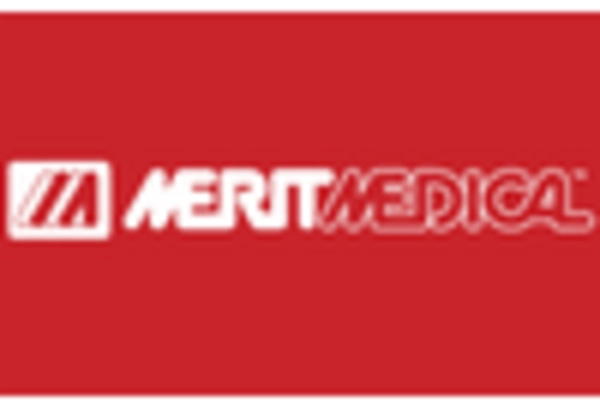Regulatory Support and Approvals
The Absorbable Tissue Spacer Market benefits from increasing regulatory support and streamlined approval processes for new medical devices. Regulatory bodies are recognizing the importance of absorbable materials in enhancing surgical procedures and are facilitating faster pathways for product approvals. This trend is likely to encourage manufacturers to invest in research and development, leading to a wider array of products entering the market. The approval of innovative absorbable spacers is expected to stimulate competition and drive market growth, as healthcare providers seek the latest advancements to improve surgical practices.
Expansion of Healthcare Infrastructure
The Absorbable Tissue Spacer Market is positively impacted by the expansion of healthcare infrastructure in various regions. As hospitals and surgical centers enhance their capabilities, the demand for advanced surgical solutions, including absorbable tissue spacers, is likely to increase. Investments in healthcare facilities are being made to accommodate the rising number of surgical procedures, which in turn drives the need for effective and safe surgical materials. This expansion is particularly evident in emerging markets, where healthcare access is improving, and the adoption of modern surgical techniques is on the rise, further contributing to the growth of the absorbable tissue spacer market.
Rising Demand for Minimally Invasive Procedures
The Absorbable Tissue Spacer Market is witnessing a notable increase in the demand for minimally invasive surgical procedures. This trend is largely attributed to the benefits associated with such techniques, including reduced recovery times, lower risk of infection, and less postoperative pain. As healthcare providers and patients alike seek alternatives to traditional surgery, the adoption of absorbable tissue spacers is likely to rise. According to recent estimates, the market for minimally invasive surgeries is expected to reach USD 50 billion by 2026, further propelling the growth of the absorbable tissue spacer segment as it aligns with the overall shift towards less invasive treatment options.
Growing Awareness of Patient Safety and Outcomes
The Absorbable Tissue Spacer Market is increasingly influenced by the growing awareness surrounding patient safety and surgical outcomes. Healthcare professionals are prioritizing the use of materials and techniques that enhance patient recovery and minimize complications. Absorbable tissue spacers are gaining traction as they offer a solution that reduces the need for additional surgeries to remove implants. This focus on patient-centric care is reflected in the rising number of clinical studies and publications advocating for the use of absorbable materials in surgical settings. As a result, the market is expected to expand as healthcare systems adopt these solutions to improve patient outcomes.
Technological Innovations in Absorbable Tissue Spacer Market
The Absorbable Tissue Spacer Market is experiencing a surge in technological innovations that enhance the efficacy and safety of surgical procedures. Advanced materials and manufacturing techniques are being developed, leading to the creation of more effective absorbable spacers. These innovations not only improve the performance of the spacers but also reduce the risk of complications during and after surgery. For instance, the introduction of bioengineered materials has shown promise in improving tissue integration and minimizing inflammatory responses. As a result, the market is projected to grow at a compound annual growth rate of approximately 8% over the next five years, driven by these advancements.


















Leave a Comment